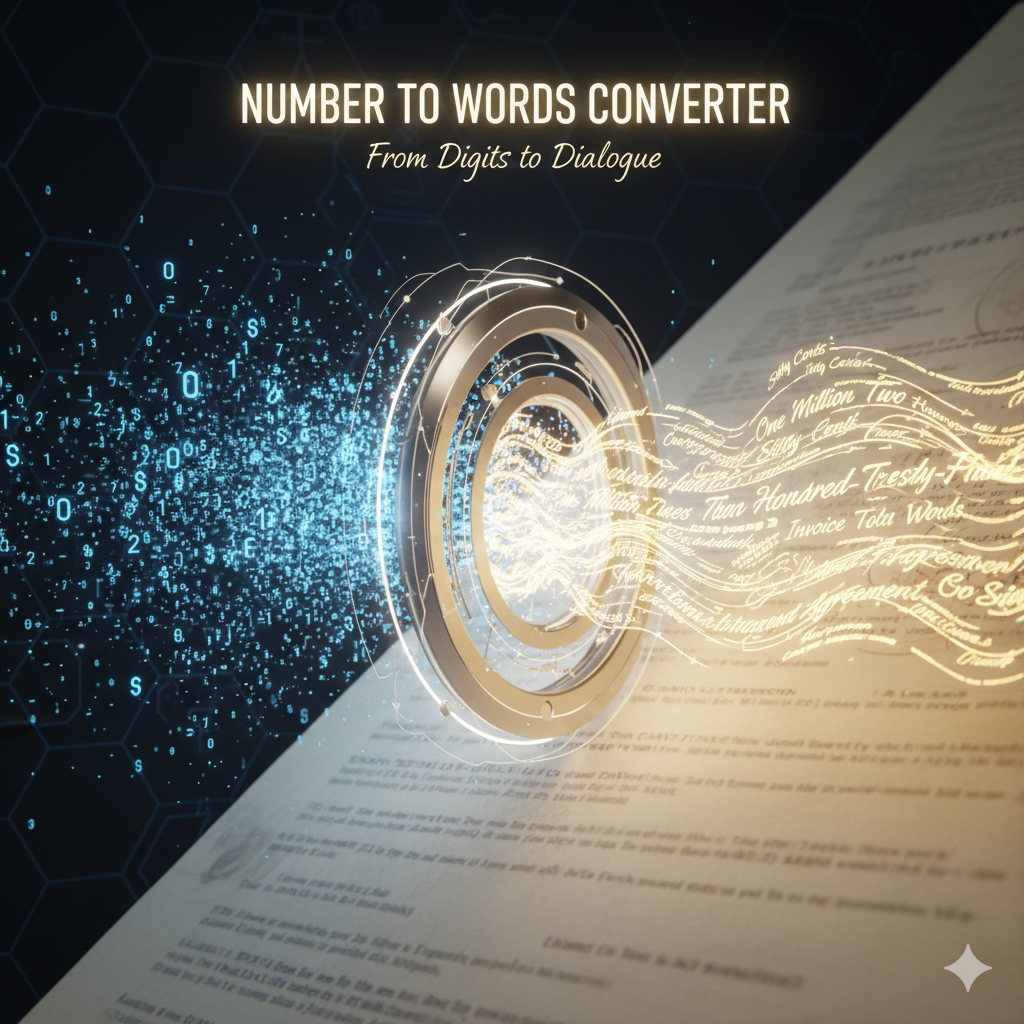
Number to Word Converter Tools
Created on 29 October, 2025 • Converter Tools • 41 views • 2 minutes read
🔢 From Digits to Dialogue: The Magic of a Number to Words Converter ✨
Have you ever looked at a long number, perhaps on a check or a legal document, and paused, wondering exactly how to write it out in words? You're not alone! Converting numbers from their digital form into human-readable words is a common necessity, especially in formal contexts. That's where the ingenious Number to Words Converter comes into play.
Why Do We Need to Convert Numbers to Words? 🤔
While we use digits ($0-9$) every day to represent quantities, there are specific situations where words are mandatory or strongly preferred:
- Financial Documents: This is the most critical use case. On checks, bank drafts, and invoices, amounts are typically written in words (e.g., One Hundred Twenty-Five and 50/100 Dollars) alongside the numerical figures. This practice helps prevent fraud or ambiguity, as altering words is much harder than changing digits.
- Legal Documents and Contracts: Contracts, wills, and other legal papers often require numbers (like dates or sums of money) to be spelled out to ensure clarity and avoid misinterpretation.
- Formal Writing: In academic papers, reports, or very formal correspondence, large numbers may be written out in words for improved readability and formality.
- Accessibility: For people using screen readers or other assistive technologies, having the numbers spelled out can improve comprehension.
How Does a Number to Words Converter Work? ⚙️
While it might seem simple for small numbers, converting large numbers correctly involves complex linguistic rules, especially when dealing with different place values and international naming conventions.
At its core, the converter follows a set of rules based on the place value system (ones, tens, hundreds, thousands, millions, etc.):
- Grouping: It first breaks the number down into groups of three digits (e.g., $123,456,789$ is grouped as $123$ million, $456$ thousand, $789$).
- Conversion within a Group: For each group, it converts the three-digit number into words (e.g., $456$ becomes "Four Hundred Fifty-Six").
- Applying the Place Name: It then appends the correct place value name to the converted group (e.g., "Four Hundred Fifty-Six Thousand").
- Handling Decimals: For numbers with decimal points (like currency), the whole number part is converted, and the decimal part is handled separately, often represented as a fraction or a decimal equivalent (e.g., $25.50$ is "Twenty-Five and Fifty Cents").
Example:
The number $\mathbf{1,234,567}$ is converted as:
- $\mathbf{1}$: One Million
- $\mathbf{234}$: Two Hundred Thirty-Four Thousand
- $\mathbf{567}$: Five Hundred Sixty-SevenResult: One Million Two Hundred Thirty-Four Thousand Five Hundred Sixty-Seven
The Power of Automation and Precision 🚀
Manually converting large, complicated numbers is tedious and prone to human error—imagine trying to convert $4,567,890,123.45$ without a tool! A digital converter eliminates this risk, offering:
- Speed: Instantaneous conversion, regardless of the number's size.
- Accuracy: Consistent application of all grammar and place-value rules, preventing errors in crucial documents.
- Ease of Use: Simply type or paste the number, and the words appear.
A Small Tool, A Big Difference
Next time you need to write out a significant number, whether for a massive contract or just filling out a check, remember the simple elegance and critical importance of a Number to Words Converter. It's a foundational utility that bridges the gap between concise digits and crystal-clear human language, ensuring precision in a world that demands it.
Popular posts
-
DNS LookupChecker Tools • 91 views
-
Gravatar checkerChecker Tools • 63 views
-
SSL LookupChecker Tools • 51 views
-
Website hosting checkerChecker Tools • 50 views
-
Whois LookupChecker Tools • 48 views